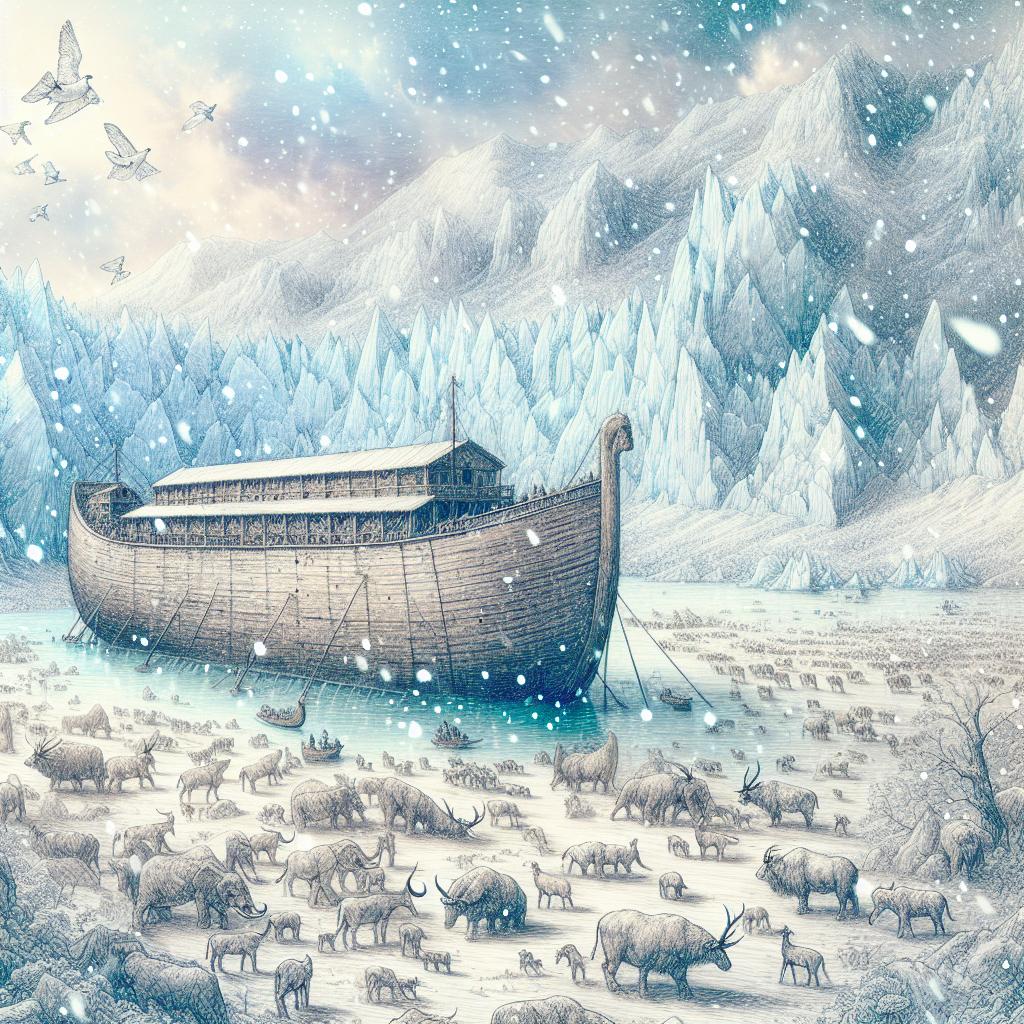
Unveiling Biblical Truths About the Ice Age: 7 Answers Revealed
Published: 04 July 2024
Ice Ages: Questions and Answers
The concept of ice ages has long fascinated scientists and theologians alike. As Christians, it is essential for us to explore the biblical and scientific truths related to this phenomenon. In this article, we will delve into six key points that shed light on the ice age theory from a young-earth, Christian, creationist perspective.
1. Understanding Ice Ages
Ice ages refer to periods in Earth's history when vast areas of land were covered by massive ice sheets. These events are thought to have occurred multiple times throughout geological history. Scientists believe that various factors, such as changes in Earth's orbit and atmospheric conditions, played a role in triggering and sustaining these ice ages.
Why This Matters: Exploring the concept of ice ages helps us appreciate the incredible diversity of Earth's past and how it fits into God's overarching plan for creation.
Think About It: Consider how the occurrence of ice ages could impact our understanding of the biblical narrative, particularly the events before and after Noah's flood.
2. The Role of Noah's Flood
According to the Bible, Noah's flood was a global cataclysmic event that reshaped Earth's surface. Creationists propose that this catastrophic event was responsible for initiating the conditions necessary for an ice age. The flood would have caused significant geological disruptions, including the formation of massive amounts of volcanic ash and sediment in the atmosphere. This could have led to a global cooling effect, setting the stage for an ice age.
Why This Matters: Understanding how Noah's flood could have contributed to the onset of an ice age allows us to see how biblical events align with scientific explanations.
Think About It: Consider how God's sovereignty over natural processes can be seen in both the biblical account and scientific theories concerning ice ages.
3. The Mechanism Behind Ice Ages
To comprehend how ice ages occur, we must grasp the concept of "Milankovitch cycles." These cycles involve periodic variations in Earth's orbit, tilt, and precession. These changes affect the amount and distribution of solar radiation reaching Earth's surface, ultimately influencing climate patterns. When certain conditions align, it can lead to a prolonged period of cooling, triggering an ice age.
Why This Matters: Understanding the scientific mechanisms behind ice ages reveals the intricate design and order within God's creation.
Think About It: Reflect on how God's sovereignty extends to the laws and cycles He established to govern our planet's climate.
4. Evidence for Ice Ages
Scientists have gathered compelling evidence that points to the occurrence of ice ages throughout Earth's history. Glacial deposits, such as moraines and striations, are found in regions far from current glacial locations. Additionally, sediment cores drilled from deep ocean floors reveal distinct layers of glacial debris, indicating multiple ice age cycles.
Why This Matters: Examining the evidence for ice ages allows us to appreciate the scientific method and its ability to uncover the mysteries of Earth's past.
Think About It: Consider how the evidence for ice ages aligns with the biblical narrative, particularly in light of Noah's flood and its global impact.
5. The Duration of Ice Ages
Ice ages are believed to have lasted for thousands of years, with alternating periods of glaciation and interglacial periods. Glaciation refers to times when ice sheets expand and cover large land areas, while interglacial periods are characterized by warmer climates and reduced ice coverage. The fluctuations between these two states occurred cyclically throughout each ice age.
Why This Matters: Understanding the duration and cyclical nature of ice ages enables us to grasp the vastness of God's creative timeline.
Think About It: Ponder how the cyclical nature of ice ages reflects God's enduring faithfulness in sustaining His creation.
6. Ice Ages and Human History
The timing of ice ages intersects with human history, particularly in relation to the development and dispersion of early civilizations. Ice age conditions would have affected sea levels, resulting in land bridges and exposing coastal areas that are now submerged. These geographical changes could have influenced human migration patterns and the distribution of ancient civilizations.
Why This Matters: Exploring the connection between ice ages and human history broadens our understanding of how God's providence shaped the course of human civilization.
Think About It: Consider how ice ages could have impacted the spread of humanity across the globe, ultimately playing a role in God's redemptive plan.
In conclusion, delving into the concept of ice ages from a young-earth, Christian, creationist perspective allows us to appreciate the intricate interplay between biblical truths and scientific explanations. By exploring the mechanisms, evidence, and implications of ice ages, we gain a deeper understanding of God's creative power and His sovereignty over Earth's climate. So let us marvel at the wonders of God's creation and continue to seek knowledge that aligns with His revealed Word.
